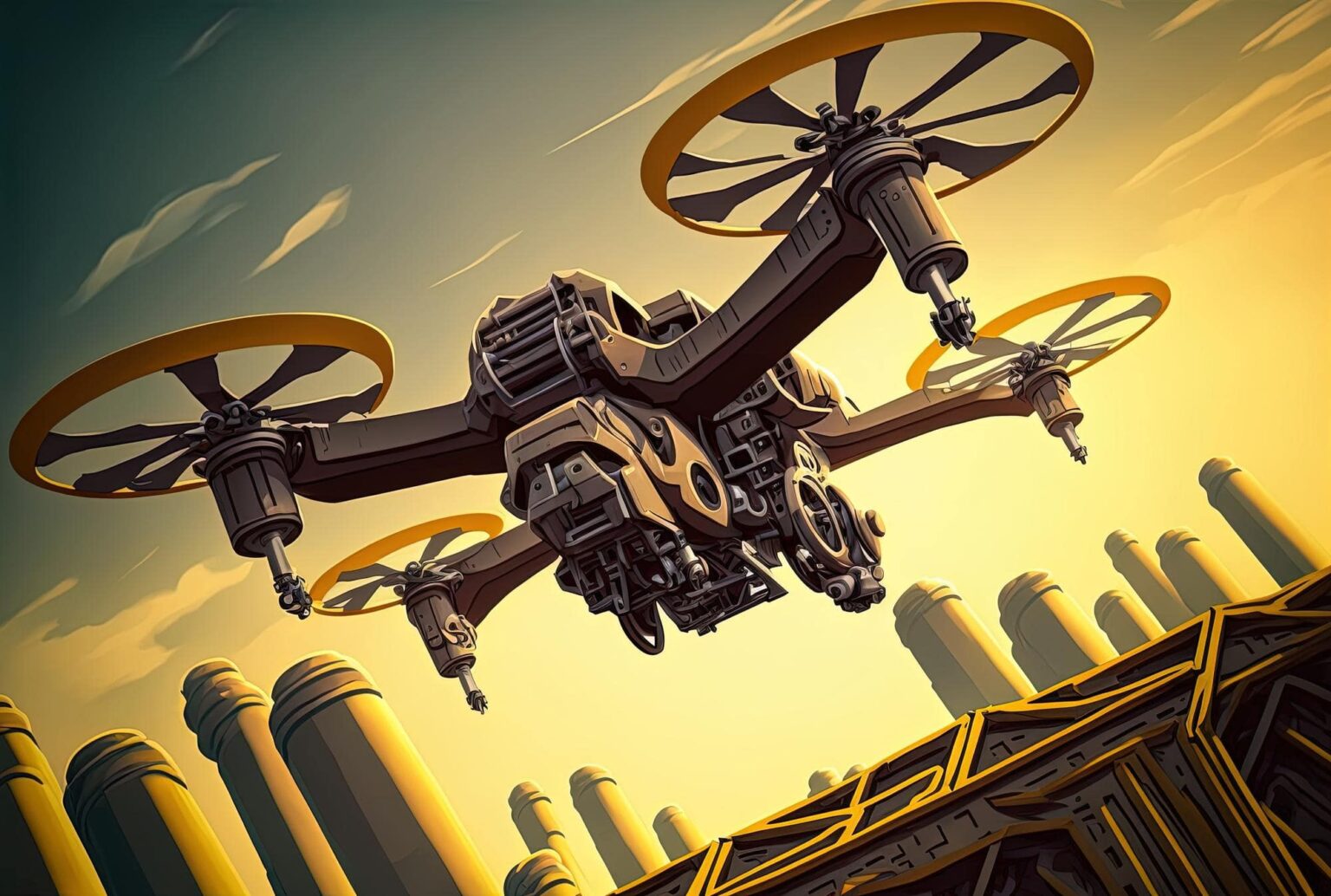The rise of autonomous drones represents a significant advancement in the fields of artificial intelligence (AI) and robotics. Autonomous drones, also known as unmanned aerial vehicles (UAVs), are unmanned aircraft that can operate without direct human control. They are equipped with sophisticated AI algorithms and robotic systems that enable them to perform various tasks autonomously. Here are some key advancements in AI and robotics that have contributed to the rise of autonomous drones:
AI-based Navigation and Obstacle Avoidance: Autonomous drones utilize AI algorithms for navigation and obstacle avoidance. They are equipped with sensors such as cameras, LiDAR, and radar, which collect data about their surroundings. AI algorithms process this data in real-time, allowing drones to detect and avoid obstacles, navigate complex environments, and plan optimal flight paths.
Computer Vision and Object Recognition: Autonomous drones rely on computer vision techniques and object recognition algorithms to interpret visual data captured by their cameras. These algorithms enable drones to identify and track objects of interest, such as people, vehicles, or specific landmarks. This capability is particularly useful in applications like aerial surveillance, search and rescue operations, and delivery services.
-
Machine Learning and Deep Learning: Machine learning and deep learning techniques play a crucial role in the development of autonomous drones. Through machine learning algorithms, drones can learn from past experiences and improve their performance over time. Deep learning algorithms, such as convolutional neural networks (CNNs), are used for tasks like image recognition and object detection, enabling drones to make accurate and real-time decisions based on the data they capture.
-
Swarm Intelligence: Autonomous drones can operate in swarms, where multiple drones collaborate and communicate with each other to achieve complex tasks. Swarm intelligence algorithms enable drones to share information, coordinate movements, and perform tasks collectively. This approach has applications in areas like surveillance, disaster response, and environmental monitoring, where the collective capabilities of the swarm are more powerful than that of individual drones.
-
Sensor Fusion: Autonomous drones integrate data from multiple sensors, such as cameras, GPS, accelerometers, and gyroscopes, through sensor fusion techniques. This integration enhances situational awareness and enables drones to gather more comprehensive and accurate information about their environment. Sensor fusion allows drones to compensate for the limitations of individual sensors and make informed decisions based on a holistic understanding of the surroundings.
-
Automated Mission Planning and Execution: Autonomous drones can autonomously plan and execute missions based on predefined objectives. Using AI algorithms, drones can analyze mission requirements, optimize flight paths, and allocate resources efficiently. This automation reduces the need for manual intervention and allows drones to perform complex tasks, such as mapping, inspection, and precision agriculture, with high precision and efficiency.
-
Energy Efficiency and Autonomy: Advancements in battery technology and energy management systems have improved the autonomy and flight time of autonomous drones. AI algorithms help optimize energy consumption, allowing drones to perform tasks for extended periods without requiring frequent recharging. This is particularly important in applications such as aerial surveys, monitoring large areas, and package delivery, where drones need to cover significant distances.
-
Safety and Collision Avoidance: Safety is a critical consideration in autonomous drone operations. AI-based collision avoidance systems use real-time data and predictive models to detect and avoid potential collisions with other drones, aircraft, or obstacles. These systems enable autonomous drones to operate safely in shared airspace and adhere to regulations and best practices.
The advancements in AI and robotics have paved the way for the rise of autonomous drones, unlocking a wide range of applications across industries such as agriculture, construction, logistics, surveillance, and emergency response. As technology continues to evolve, we can expect further advancements in autonomous drones, enabling them to perform increasingly complex tasks with enhanced efficiency and reliability.



